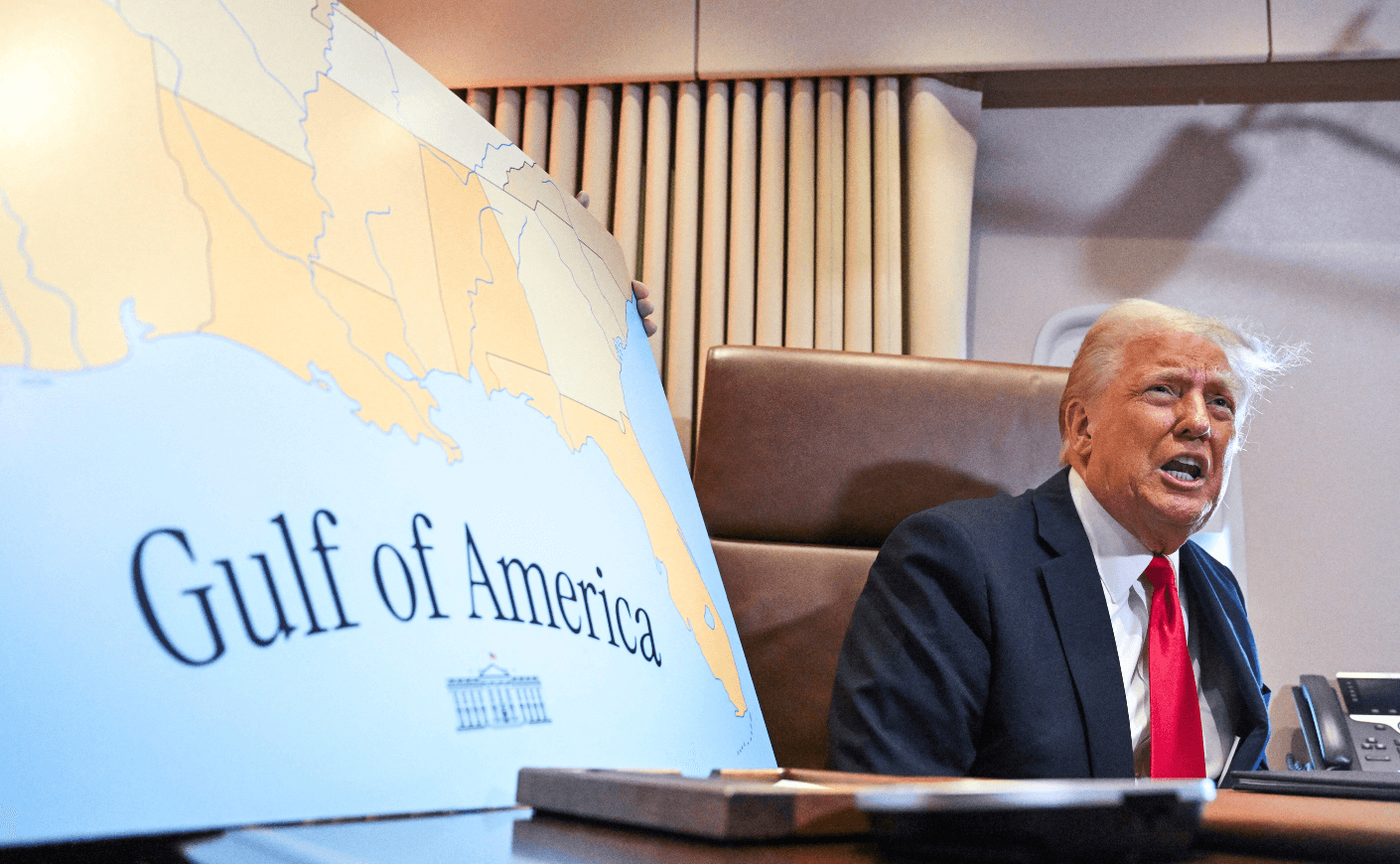The Associated Press and the Trump administration are locked in a showdown — all because the AP refused to call the body of water formerly known as “Gulf of Mexico" the “Gulf of America," per Trump's executive order. The news organization is sticking with its stance, and that decision has caused a domino effect.
Trump retaliated by banning the news agency from the White House and other key spaces, prompting the AP to fire back with a lawsuit, arguing that the move threatens press freedom.
The dispute has even caught international attention, with Germany’s top opposition leader Friedrich Merz criticizing Trump’s decision. "We would never kick a news agency out of the press room of our Chancellery," said Merz (his country's presumptive election winner, as of press time).
Here’s what’s behind the controversy and why the AP believes Trump's actions are illegal.
Why did Trump ban the Associated Press?
On his first day back in office, Trump signed an executive order to rename the Gulf of Mexico, a body of water that stretches beyond U.S. territory and has been known by that name since the 1500s. His preferred moniker? The Gulf of America. (Trump followed his order with a proclamation declaring Feb. 9 "Gulf of America Day.")
But just a few weeks later, on Jan. 23, the AP updated its widely referenced stylebook to say it would continue calling the area the Gulf of Mexico, while acknowledging Trump’s name change.
“The Gulf of Mexico has carried that name for more than 400 years,” the AP explained. “The Associated Press will refer to it by its original name while acknowledging the new name Trump has chosen. As a global news agency that disseminates news around the world, the AP must ensure that place names and geography are easily recognizable to all audiences.”
While the AP complied with Trump’s order to revert the name of North America’s tallest peak, Denali in Alaska, back to Mount McKinley — citing the U.S. jurisdiction over the area — the administration wasn’t pleased with the AP’s stance on the Gulf of Mexico. In retaliation, it blocked the AP from covering several White House events, including Trump’s press conference with Indian Prime Minister Modi. Trump even made it clear in a Feb. 18 press conference that the AP reporters would be kept out of key events until they agreed to refer to the Gulf as the “Gulf of America.”
Amid the fallout last week, AP executive editor Julie Pace met with Trump’s chief of staff, Susie Wiles, on Wednesday to discuss restoring the news organization’s access to the Oval Office and Air Force One. But tensions escalated just days later, when the White House barred an AP reporter and photographer from boarding Air Force One for a weekend trip with Trump, over the name dispute.
Although other major outlets like The Washington Post and The New York Times also plan to keep using “Gulf of Mexico,” the AP seems to have been singled out due to its significant influence on mainstream news and journalists.
What does the AP's lawsuit say?
After being barred from White House events and spaces, the AP fired back with a lawsuit against the Trump administration, arguing that the move threatened press freedom. While AP reporters and photographers still have general access to the White House, the news agency claimed in court filings that its journalists have been excluded from the press pool since Feb. 11. The press pool is a select group of reporters who cover the president at events with limited space, such as in the Oval Office or aboard Air Force One.
"The press and all people in the United States have the right to choose their own words and not be retaliated against by the government," reads the AP's lawsuit. "The Constitution does not allow the government to control speech. Allowing such government control and retaliation to stand is a threat to every American's freedom."
The AP isn’t standing alone, either: About 40 news organizations, including conservative outlets like Newsmax and Fox News, signed a letter organized by the White House Correspondents Association, urging the White House to reverse its policy against the AP. Several journalism organizations have also spoken out against the ban, calling on the Trump administration to change course.
Press Secretary Karoline Leavitt, one of three Trump officials named in the lawsuit, found out about the issue while returning from an appearance at the Conservative Political Action Conference. After talking with White House counsel, she told the AP she believes they “are in the right,” adding, “We’re going to ensure that truth and accuracy are present at that White House every single day.”
Even so, the Trump administration isn’t backing down. White House spokesperson Steven Cheung was more dismissive about the lawsuit, calling it “frivolous and demented.”
With the battle lines drawn, the lawsuit could set a significant precedent for press freedom and government power — one that may echo far beyond the White House gates.









